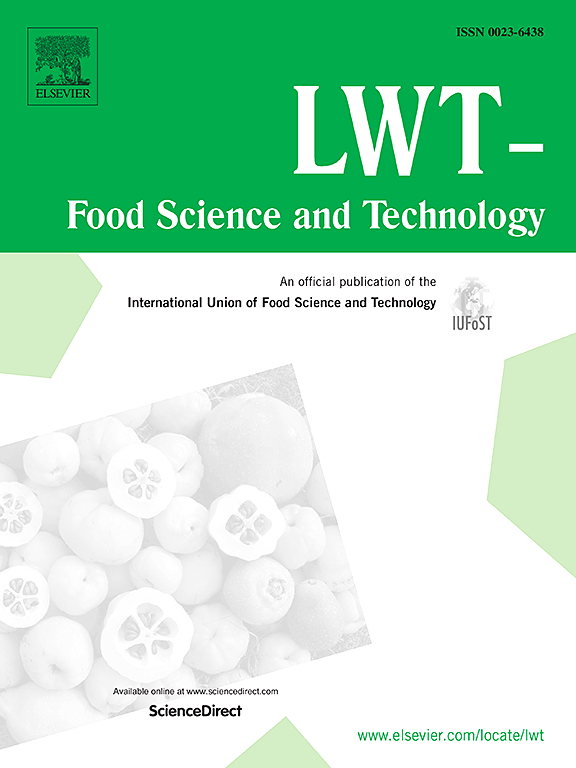Comparison of methods to produce high-quality dried triploid Fujian oyster: Hot air drying emerges as a superior technique
IF 6
1区 农林科学
Q1 FOOD SCIENCE & TECHNOLOGY
引用次数: 0
Abstract
Dried oysters are widely valued in Asian cuisine for their unique flavor profiles and nutritional benefits. However, as a newly developed variety characterized by rapid growth, the effects of different drying methods on triploid Fujian oysters remain unexplored. In this study, we investigated the effects of different drying methods on the flavor profile of triploid Fujian oyster. Oysters processed by hot air drying (HAD), natural drying (ND), vacuum drying (VD), and vacuum freeze-drying (VFD) were compared with blanched controls (BC). Drying significantly increased the types and concentrations of non-volatile metabolites and flavor substances, with HAD yielding optimal results. The HAD-treated oysters contained the highest contents of key nutritional compounds (N-acetyl-L-aspartic acid: 2.2-fold the mean value across all drying treatments), antioxidants (2-pyrrolidone: 1.5-fold), and flavor substances (pyrazines: 2.0-fold; 2-furanmethanol: 2.8-fold, ethyl acetate: 1.3-fold). Thus, HAD-treated oysters had a rich and balanced aroma profile with excellent umami, sweet, and fruity flavors. The compounds contributing to flavor enhancement (odor activity value > 1) were (E)-2-nonenal, (E)-2-octenal, heptanal, 2-methylbutyraldehyde, and 2-undecanone. Correlation analysis revealed complex relationships between non-volatile compounds and flavor substances. This study provides guidance for optimizing drying techniques and standardizing dried oyster production.
求助全文
约1分钟内获得全文
求助全文
来源期刊

LWT - Food Science and Technology
工程技术-食品科技
CiteScore
11.80
自引率
6.70%
发文量
1724
审稿时长
65 days
期刊介绍:
LWT - Food Science and Technology is an international journal that publishes innovative papers in the fields of food chemistry, biochemistry, microbiology, technology and nutrition. The work described should be innovative either in the approach or in the methods used. The significance of the results either for the science community or for the food industry must also be specified. Contributions written in English are welcomed in the form of review articles, short reviews, research papers, and research notes. Papers featuring animal trials and cell cultures are outside the scope of the journal and will not be considered for publication.
 求助内容:
求助内容: 应助结果提醒方式:
应助结果提醒方式:


